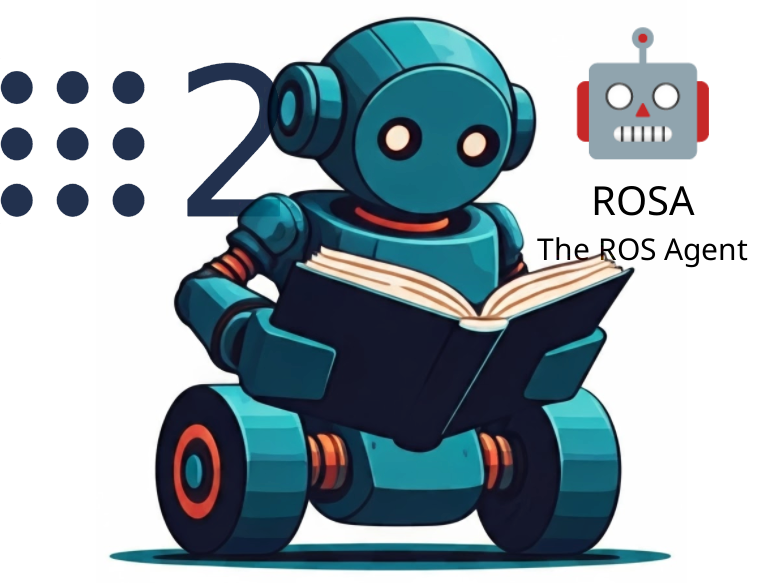
ROSA (Robot Operating System Agent), developed by NASA’s Jet Propulsion Laboratory, is transforming human-robot interaction within ROS (Robot Operating System) and ROS 2 frameworks. By allowing natural language commands to control complex robotic functions, ROSA bridges the gap between robotic hardware and human intent, making it a game-changer for robot management and debugging.
This guide offers a comprehensive look at ROSA’s core features, usage tips, and upcoming advancements for robotic developers. Here’s everything you need to know to leverage ROSA effectively for ROS and ROS 2 debugging, task execution, and human-robot collaboration.
ROSA brings valuable enhancements to the ROS ecosystem with features like ROS and ROS 2 compatibility, natural language processing, advanced reporting, and a user-friendly modular interface. These capabilities streamline robotics management, helping developers save time and reduce the complexity of human-robot collaboration.
Whether using ROS or ROS 2, ROSA integrates seamlessly, making it easy to work across different ROS environments without needing additional adjustments. This dual compatibility offers flexibility and continuity for managing robotics projects in any ROS setup.
ROSA’s natural language processing (NLP) allows users to issue commands like “List all active nodes” or “Move the robot forward.” By translating these commands into executable actions, ROSA streamlines robotic operations, letting users focus on objectives without getting bogged down by technicalities.
ROSA saves developers hours by automatically generating system reports and analyzing ROS log files. This intelligent reporting provides real-time insights into robot performance and system states, enhancing oversight and making it easier to detect issues.
With a highly intuitive interface, ROSA allows developers to customize and expand its functionalities. The modular design supports tailored tool integrations, enabling flexibility for unique project needs and enhancing overall usability.
ROSA’s debugging capabilities streamline interactions in ROS/ROS2 systems through natural language. Key features include:
For practical scenarios like node communication issues, TF frame problems, or service failures, ROSA automates and simplifies troubleshooting, making it invaluable for real-time debugging in ROS environments.
Creating custom agents in ROSA allows tailored interactions with specific robots or environments. You can extend ROSA by:
RobotSystemPrompts to set the agent’s behavior.Here’s an example:
For more, check the ROSA Custom Agents Guide.
ROSA’s response modes cater to different needs. Synchronous responses offer immediate answers for simple queries, while streaming responses allow for ongoing, dynamic interaction.
Synchronous Responses with invoke: invoke processes a complete query in one step, making it ideal for simple tasks or where real-time output isn’t needed. It handles token tracking, error catching, and updates to chat history.
Asynchronous Streaming with astream: astream streams results in real-time, updating incrementally, and notifying tool usage start and end. It’s best for dynamic applications where responsiveness is key.
For details, see the full guide here.
docker build -t rosa-turtlesim .
docker run -it --rm rosa-turtlesimOPEN_AI environment variables in the .env file./demo.shFor optimal usage, provide ROSA with context. Mention the robot’s environment, dynamic elements, and any specific constraints. This not only ensures effective task execution but also enhances safety.
ROSA is set to grow with features like expanded LLM support, multi-modal perception, and platform-specific agents for robots like TurtleBot, NASA’s Open-Source Rover, and Boston Dynamics’ Spot.
ROSA simplifies robot interaction through natural language commands, aiding in debugging, management, and task automation.
ROSA uses NLP to convert commands into executable ROS/ROS 2 actions.
Yes, with models provided in Ollama, ROSA can run offline for secure, local processing. See more: Using ChatOllama.